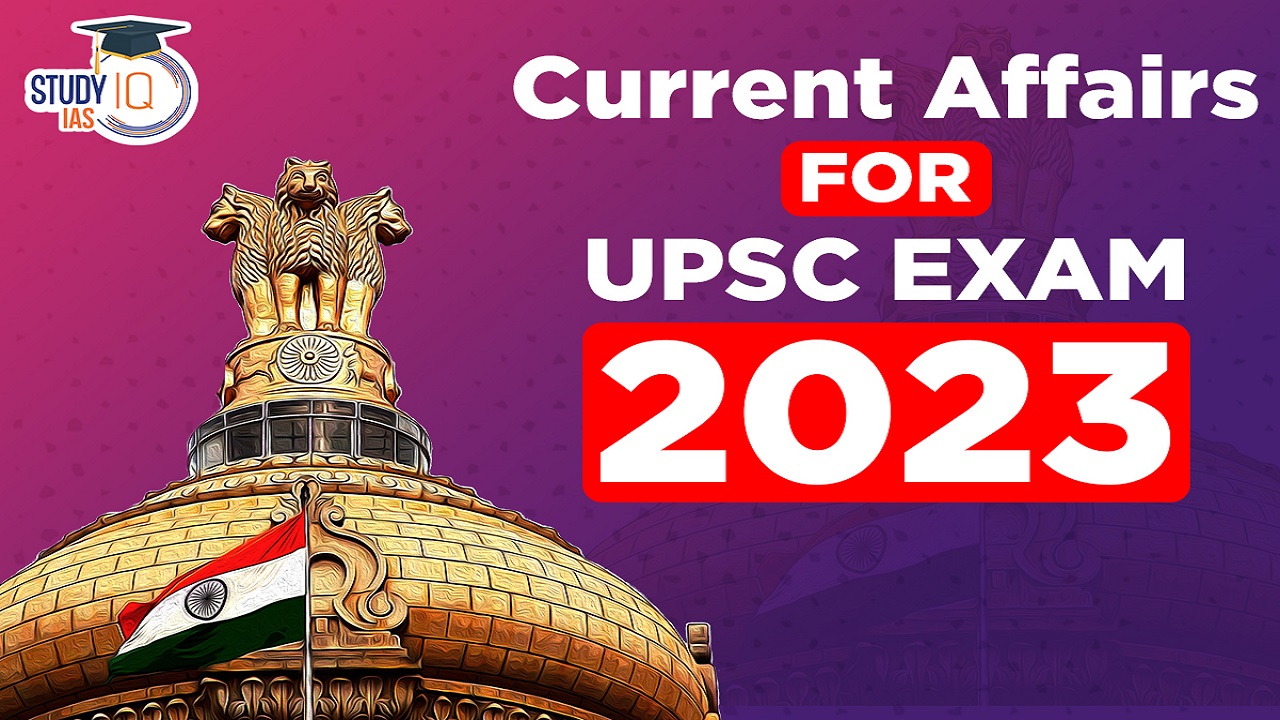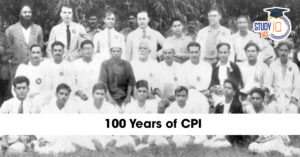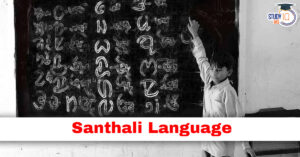Current Affairs 11th May 2023 for UPSC Prelims Exam
Periyar Tiger Reserve
Context: The wild elephant named Arikompan was recently translocated to the Periyar Tiger Reserve.
About the Periyar Tiger Reserve (PTR)
- Location: It is a protected area located in the districts of Idukki and Pathanamthitta in Kerala. It is situated high in the Cardamom Hills and Pandalam Hills of the southwestern Ghats along the border with Tamil Nadu.
- Establishment: Declared a Sanctuary during 1950 and declared as Tiger Reserve during 1978 under the Project Tiger initiative.
- Important waterbodies: The major rivers through the reserve are Mullayar and Periyar.
- Flora: PTR comprises of tropical evergreen, semi evergreen, moist deciduous forests and grasslands.
- Important fauna: Bengal tigers, Indian elephants, Indian bison (gaurs), Sambar deer, lion-tailed macaques, Malabar giant squirrels, Indian porcupines, and a variety of bird species. It Is also being considered as the habitat of the elusive Nilgiri Tahr.
- Tribal communities: There are six tribal communities nestled inside the reserve such as Mannans, Paliyans, Malayarayans, Mala Pandarams, Uralis and Ulladans.

Current Affairs 10th May 2023 for UPSC Prelims Exam
Model Code of Conduct
Context: Recently, Karnataka High Court allowed hotels to serve cooked food for free or at reduced rates to people who had cast their votes in the state Assembly Elections.
About Model Code of Conduct
- Election Commission’s Model Code of Conduct is a set of guidelines issued to regulate political parties and candidates before elections.
- It helps EC in keeping with the mandate it has been given under Article 324 of the Constitution, which gives it the power to supervise and conduct free and fair elections to the Parliament and State Legislatures.
- The MCC is operational from the date on which the election schedule is announced until the date of the result announcement.
- Though the MCC does not have any statutory backing, it has come to acquire strength in the past decade because of its strict enforcement by the EC.
- Certain provisions of the MCC may be enforced through invoking corresponding provisions in other statutes such as the IPC 1860, CrPC 1973, and RPA 1951.
- Evolution: The Election Commission issued the code for the first time in 1971 (5th Election) and revised it from time to time.
- This set of norms has been evolved with the consensus of political parties who have consented to abide by the principles embodied in the said code and also binds them to respect and observe it in its letter and spirit.

Lithium
Context: Recently, Geological Survey of India (GSI) termed media reports saying large lithium reserves being identified in Rajasthan as “baseless”.
- In February, 2023, 5.9 million tonnes inferred resources of lithium were discovered in the Salal-Haimana area of Reasi district, Jammu & Kashmir, by the Geological Survey of India.
About Lithium
- Lithium is a chemical element with the symbol Li and atomic number 3.
- It is a soft, silvery-white alkali metal.
- Under standard conditions, it is the least dense metal and the least dense solid element.
- Like all alkali metals, lithium is highly reactive and flammable, and must be stored in vacuum, inert atmosphere, or inert liquid such as purified kerosene or mineral oil.
Application of Lithium
- Lithium is an important component of electrochemical cells used in batteries of EVs, Laptops, Mobiles etc.
- It is also used in thermonuclear reactions.
- It is used to make alloys with aluminium and magnesium, improving their strength and making them lighter.
- Magnesium-lithium alloy – for armour plating.
- Aluminium-lithium alloys – in aircraft, bicycle frames and high-speed trains.
About Geological Survey of India (GSI)
- GSI is an attached office to the Ministry of Mines. It was set up in 1851 primarily to find coal deposits for the Railways.
- It has grown into a repository of geo-science information and also has attained the status of a geo-scientific organization of international repute.
- Objective is providing objective, impartial and up-to-date geological expertise and geoscientific information of all kinds, with a focus on policy-making decisions and commercial and socio-economic needs.
- Under the National Mineral Policy (NMP) 2008, GSI remains the principal agency for geological mapping and regional mineral resources assessment of the country.
- It is headquartered in Kolkata and has six regional offices located at Lucknow, Jaipur, Nagpur, Hyderabad, Shillong and Kolkata. Every state has a state unit.

Debrigarh Wildlife Sanctuary
Context: Odisha government is yet to notify Debrigarh Wildlife Sanctuary as a tiger reserve even three months after the National Tiger Conservation Authority (NTCA) accorded the tag.
About Debrigarh Wildlife Sanctuary
- Located near the Hirakud dam at Sambalpur, Debrigarh Wildlife Sanctuary is one of the famous tourist destinations of western Odisha.
- It will become the third tiger reserve in Odisha after Similipal and Satkosia.
- It will have a total area of 804 sq km with a core area of 353 sq km.
- It was declared as a wildlife sanctuary in 1985 and situated in the Bargarh district of Odisha near Hirakud dam (Mahanadi River).
- Speciality: It finds a special mention because of noted freedom fighter veer Surendra sai. During his rebellion against the British, Veer Surendra Sai made his base at ‘Barapathara” located within the sanctuary.
- Fauna: A wide varieties of animals including leopard, wild boar, bison, sambar, chital and Four-horned antelope are sighted in the sanctuary.
- Debrigarh Wildlife Sanctuary is a Eco-sensitive Zone from both an ecological and environmental point of view and to prohibit industries or class of industries and their operations and processes in the said Eco-sensitive zone.
Project Cheetah
Context: Recent death of 3rdCheetah brought from Africa has posed a serious question on viability of Project Cheetah.
- Project Cheetah, the first transcontinental relocation initiative in Asia, has introduced twenty cheetahs to the national park. Over time, three of them passed away.
About Cheetah
- Cheetahs, scientifically known as Acinonyx jubatus, are renowned for their speed and agility.
- Cheetahs, sometimes referred to as the world’s fastest land mammal, are a model of aerodynamic dominance and can speed from 0 to 100 km per hour in just three seconds.
- The Asiatic cheetah, once considered one of the top predators, was officially declared extinct in India in 1952.
- The government of India wants to restore the endangered habitat and protect the species by the relocation of African cheetahs.
About Project Cheetah
- Goal: To establish viable cheetah metapopulation in India that allows the cheetah to perform its functional role as a top predator and provide space for the expansion of the cheetah within its historic range.
- Eight cheetahs were transported from Namibia to India on September 17, 2022, and first batch of 12 cheetahs (7 males, 5 females) were translocated from South Africa to India on February 18, 2023.
- The major objectives of the Cheetah project are:
- To establish breeding cheetah populations in safe habitats across its historic range and manage them as a metapopulation.
- To use the cheetah as a charismatic flagship and umbrella species to garner resources for restoring open forest and savanna systems that will benefit biodiversity and ecosystem services from these ecosystems.
- To use the ensuing opportunity for eco-development and eco-tourism to enhance local community livelihoods.

Santiniketan- Visva Bharati University
Context: Santiniketan, which is associated with Nobel laureate Rabindranath Tagore, has been recommended for inclusion on UNESCO’s World Heritage List.
About the University:
- Visva-Bharati University was founded by Rabindranath Tagore in 1921. It is located in Santiniketan, West Bengal.
- Visva-Bharati was inaugurated as a Centre for Culture with an exploration into the arts, language, humanities, and music and these are reflected in diverse institutes that continue in their educational programmes including Hindi studies, Sino-Asian studies, humanities, fine arts, and music.
- If the university is included in the list, it will become the world’s first “living heritage university”, since heritage tag is usually given to a dead monument.
- Features
- Until Independence, it was a college and the institution was given the status of a Central University in 1951 through a Central Act.
- Tagore believed in open-air education and introduced that system at the university, which prevails to date.
- It was based on the founding principles of excellence in culture and culture studies.
- Famous structures:
- Kalo Bari (a mud structure with a coal tar finish and sculpture panels)
- Mastermoshai studio (a single-story structure built for the first principal of Kala Bhavan)
- Murals and paintings on Cheena and Hindi Bhavan.
UNESCO’s World Heritage List:
- UNESCO designates a site as World Heritage Site for having distinct cultural, historical, scientific or other form of significance. They can be natural, man-made and mixed.
- These sites must have somehow unique landmark which is geographically and historically identifiable and has special cultural or physical significance.
- Presently, Italy with 58 sites has the most sites on the list, with China being in second place with 56 sites, and Germany being third with having 51 sites.
- Currently, India has 40 such sites. Dholavira in Gujarat was the latest addition. There are 31 man-made, 1 mixed and 8 natural sites in India.
- Nomination:
- The country must first identify its significant cultural and natural sites in a document known as the Tentative List.
- The selected sites are then placed into a Nomination File, which is evaluated by the International Council on Monuments and Sites and the World Conservation Union.
- The bodies then meet to decide if the particular site satisfies atleast one of the ten criteria to be qualified as a UNESCO heritage.

Collaborative Federalism
Context: The Constitution Bench of the Supreme Court advised the Centre (acting through the Lieutenant Governor) and the Delhi Government to follow the path of “collaborative federalism”.
More on the News:
Course of Events:
- In July 2018, a Constitution Bench of the Supreme Court advised the Centre and the Delhi government to follow the path of “collaborative federalism” to achieve common objectives.
- The judgment declared that the Delhi government had exclusive executive powers, except for certain areas like public order, police, and land.
- However, questions raised in individual appeals, such as the control over civil services in Delhi, were left to be decided by a smaller Bench.
- In 2019, a Division Bench delivered a split decision on the matter.
- In 2021, the Centre passed the Government of National Capital Territory of Delhi (Amendment) Act 2021 and the Transaction of Business of Government of National Capital Territory of Delhi (Amendment) Act, which the Delhi government challenged, claiming that they diminish the powers and functions of the elected Legislative Assembly and Council of Ministers of Delhi.
- In May 2022, a three-judge Bench referred the case over to a Constitution Bench for an authoritative pronouncement on the question of functional and administrative control over civil services. The hearing has still not reached any conclusion.
Centre-UT Tussle:
- The Delhi government has argued that the Centre is eroding federalism by trying to control civil services in Delhi, while the Centre has countered that Delhi is a sprawling metropolis that requires Union government control.
Cooperative Federalism:
- Cooperative federalism is a system of government in which the central government and the state governments work together and share responsibilities in governing the country.
- This approach emphasizes the interdependence and cooperation between the Centre and states in formulating and implementing national policies.
Evolution of Cooperative Federalism:
- The idea of cooperative federalism has existed in India since ancient times, as the central power used to adopt a non-intervention policy in local matters due to the diversity of the subcontinent.
- However, tendencies to centralize power were partly evident during the Mughal rule under some monarch rulers.
- After the Revolt of 1857, the British Government terminated its intervention policy.
- The origin of cooperative federalism in modern India can be traced back to the Regulating Act of 1773, which gave the local government the power to govern.
- The Government of India Act of 1919 anticipated a dual government system called ‘dyarchy’ in which the power was divided between the hands of a British governor and the local government.
- The Government of India Act of 1935 was made to attain this dual government system.
- The Constituent Assembly of India, formed to frame the draft of India’s constitution, aimed to build a political idea to unite a disintegrated and subdivided society. The Assembly’s members opted for an intense centre with residual power, which became prominent during the 1980s.
- However, the distribution of power from union to state and state to panchayat was later escalated. This is how India’s cooperative federalism met the constitution’s objectives like unity, social justice, and democracy.
Constitutional Provisions:
- 7th Schedule:
- The 7th Schedule of the Indian Constitution divided all powers between central, state, and concurrent lists, giving some residual powers to the Centre.
- Article 249(5) authorizes the Indian parliament to amend those subjects of the state list, but the resolution must pass an in-state council with a 2/3 majority to make a change.
- All India Services:
- All India Services caters for a unified judicial system to establish the Centre and state laws, and Article 312 of the Indian Constitution manifests this provision that works on integration under cooperative federalism in India.
- Article 263 talks about an inter-state council to consider common interest factors between the states and the Centre.
- Zonal Councils:
- There are 5 zonal councils for each zone like central, north, south, east, and west to promote coordination, designed under the State Reorganization Act of 1956, while the northeast zonal council is made under a NEC Act 1971.
- NITI Aayog: The Planning Commission was replaced with NITI Aayog to attain more cooperative federalism. This organization advises the Centre and states to look after the discussion and coordination between these two powers.
- Goods and Services Tax: The 101st Amendment Act of the Indian Constitution passed unified taxation called GST, which is a unique tax that manufacturers impose directly on the consumer, achieving a “one nation, one tax” goal.


 100 Years of CPI: Origins, Ideology, Fre...
100 Years of CPI: Origins, Ideology, Fre...
 Santhali Language: History, Script, Cons...
Santhali Language: History, Script, Cons...
 How African Reserves Eliminated Rhino Po...
How African Reserves Eliminated Rhino Po...

























